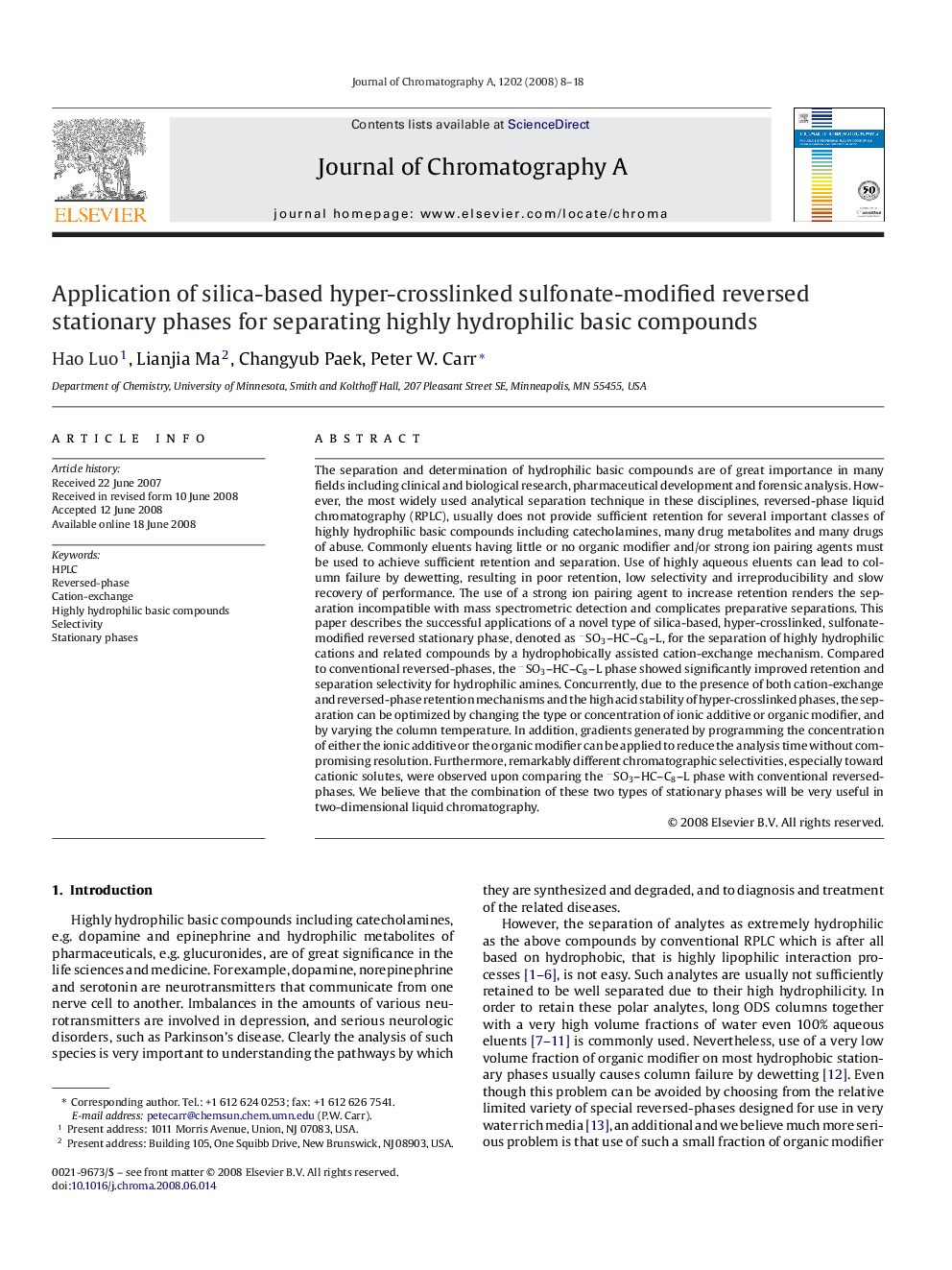| کد مقاله | کد نشریه | سال انتشار | مقاله انگلیسی | نسخه تمام متن |
|---|---|---|---|---|
| 1205198 | 965186 | 2008 | 11 صفحه PDF | دانلود رایگان |

The separation and determination of hydrophilic basic compounds are of great importance in many fields including clinical and biological research, pharmaceutical development and forensic analysis. However, the most widely used analytical separation technique in these disciplines, reversed-phase liquid chromatography (RPLC), usually does not provide sufficient retention for several important classes of highly hydrophilic basic compounds including catecholamines, many drug metabolites and many drugs of abuse. Commonly eluents having little or no organic modifier and/or strong ion pairing agents must be used to achieve sufficient retention and separation. Use of highly aqueous eluents can lead to column failure by dewetting, resulting in poor retention, low selectivity and irreproducibility and slow recovery of performance. The use of a strong ion pairing agent to increase retention renders the separation incompatible with mass spectrometric detection and complicates preparative separations. This paper describes the successful applications of a novel type of silica-based, hyper-crosslinked, sulfonate-modified reversed stationary phase, denoted as −SO3–HC–C8–L, for the separation of highly hydrophilic cations and related compounds by a hydrophobically assisted cation-exchange mechanism. Compared to conventional reversed-phases, the −SO3–HC–C8–L phase showed significantly improved retention and separation selectivity for hydrophilic amines. Concurrently, due to the presence of both cation-exchange and reversed-phase retention mechanisms and the high acid stability of hyper-crosslinked phases, the separation can be optimized by changing the type or concentration of ionic additive or organic modifier, and by varying the column temperature. In addition, gradients generated by programming the concentration of either the ionic additive or the organic modifier can be applied to reduce the analysis time without compromising resolution. Furthermore, remarkably different chromatographic selectivities, especially toward cationic solutes, were observed upon comparing the −SO3–HC–C8–L phase with conventional reversed-phases. We believe that the combination of these two types of stationary phases will be very useful in two-dimensional liquid chromatography.
Journal: Journal of Chromatography A - Volume 1202, Issue 1, 15 August 2008, Pages 8–18